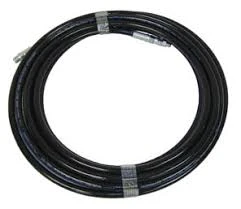R134a Refrigerant Hose with Pressure Gauge for Efficient Cooling System Maintenance
Understanding R134a Refrigerant Hose with Gauge
In the world of refrigeration and air conditioning, R134a is a commonly used refrigerant known for its effective thermal properties and relatively low environmental impact compared to its predecessors, such as R12. As systems using R134a become more prevalent in both residential and commercial applications, understanding the components that support its effective use is essential. One such crucial component is the R134a refrigerant hose with gauge.
What is an R134a Refrigerant Hose?
An R134a refrigerant hose is designed specifically to handle R134a refrigerant in air conditioning and refrigerating systems. These hoses are generally made from durable materials that can withstand the high pressures and varying temperatures within refrigeration systems. They are often reinforced to prevent leaks and maintain system integrity over time. A well-functioning refrigerant hose is integral to ensuring efficient cooling and heating, minimizing refrigerant loss, and maintaining the overall health of the HVAC system.
The Importance of Gauges
Attaching a gauge to the refrigerant hose allows for precise monitoring of the refrigerant’s pressure, which is vital for the proper functioning of the system. The gauge provides critical information about both the high and low-pressure sides of the refrigeration cycle. By reading these pressures, technicians can determine whether the system is functioning correctly and whether it is properly charged with refrigerant.
When servicing an air conditioning unit or a refrigeration system, it is crucial to check the pressure levels before and after adding refrigerant. For R134a systems, the typical low pressure should be between 25 to 45 psi, while the high pressure can range between 150 to 250 psi, depending on the ambient temperature and system specifications. Monitoring these pressures helps in diagnosing potential issues, such as leaks, blockages, or compressor failures.
r134a refrigerant hose with gauge

Using an R134a Refrigerant Hose with Gauge
Using an R134a refrigerant hose with a gauge is straightforward but requires careful handling to avoid mishaps. Before connecting the hose to the system, ensure that the gauge is functioning correctly and that the hose is pressurized adequately. Attach the low-pressure side of the hose to the service port labeled as such, ensuring any dust or debris is cleared to prevent contamination.
Once attached, read the gauge to assess the system’s condition. If the pressures are outside the normal range, adjustments may need to be made, either by adding or recovering refrigerant. Always ensure that the system is turned off when connecting or disconnecting the hose to prevent injury or equipment damage.
Safety Considerations
When working with R134a refrigerant, safety should always be a priority. R134a is a non-toxic refrigerant; however, it can displace oxygen in enclosed spaces, so exposure should be minimized. Always wear appropriate personal protective equipment (PPE), including gloves and goggles, when handling refrigerants or working on HVAC systems. Additionally, ensure that all work is carried out in a well-ventilated area.
Conclusion
In conclusion, an R134a refrigerant hose with a gauge is an indispensable tool in the maintenance and servicing of HVAC systems utilizing this popular refrigerant. Understanding how to use this equipment safely and effectively can lead to improved system performance, efficient cooling, and ultimately a longer lifespan for the equipment. As technology advances and regulations change, staying informed and equipped with the right tools is key to successful refrigeration management.
-
Ultimate Spiral Protection for Hoses & CablesNewsJun.26,2025
-
The Ultimate Quick-Connect Solutions for Every NeedNewsJun.26,2025
-
SAE J1401 Brake Hose: Reliable Choice for Safe BrakingNewsJun.26,2025
-
Reliable J2064 A/C Hoses for Real-World Cooling NeedsNewsJun.26,2025
-
Heavy-Duty Sewer Jetting Hoses Built to LastNewsJun.26,2025
-
Fix Power Steering Tube Leaks Fast – Durable & Affordable SolutionNewsJun.26,2025

